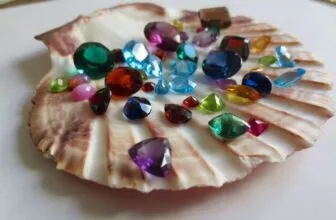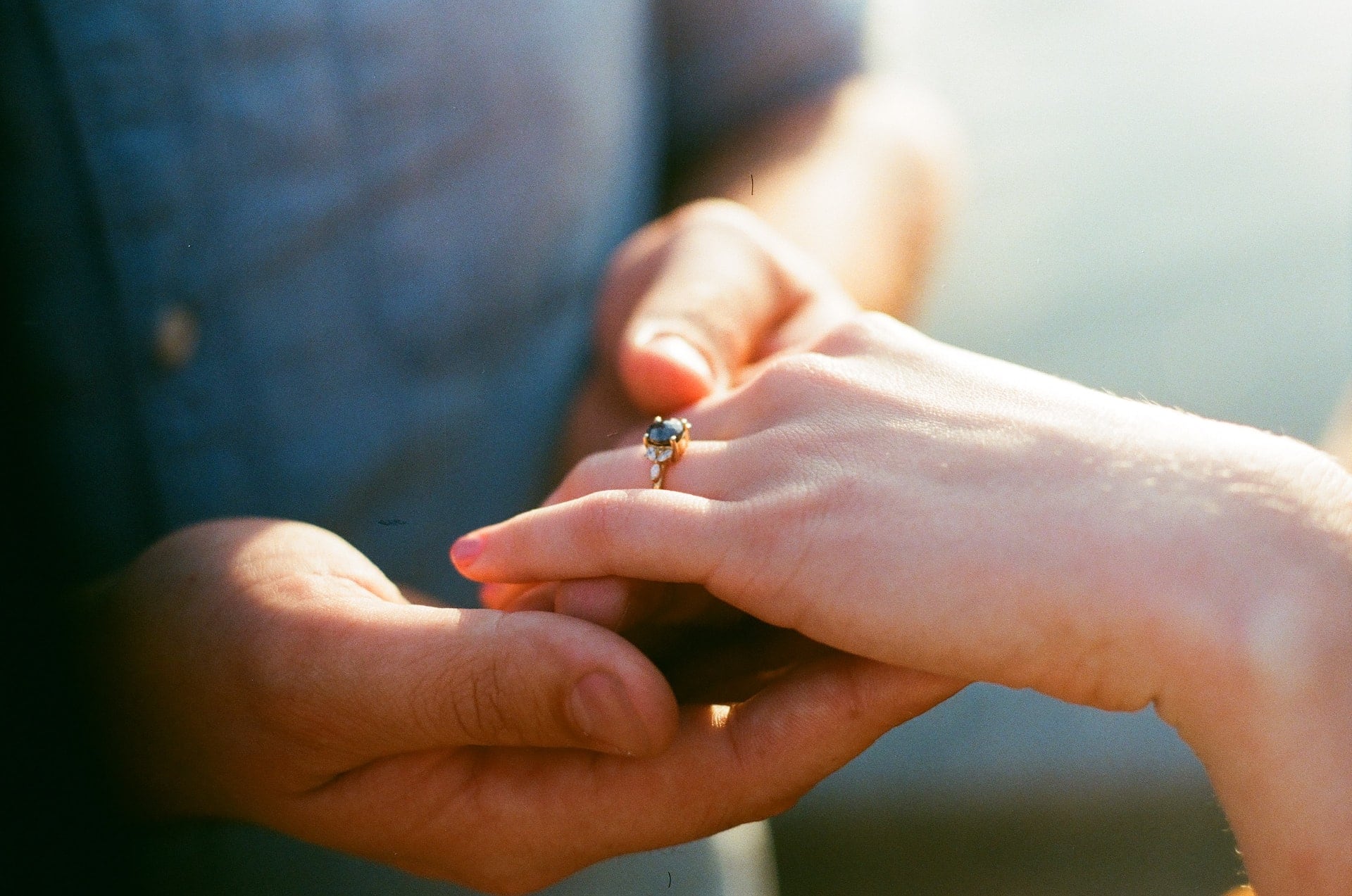
Table of Contents
The tradition of a diamond engagement ring is fairly recent, with its roots in the De Beers marketing campaigns of the 1930s.
The slogans ‘diamonds are forever’, ‘diamonds are a girl’s best friend’ and the concept of spending 2 months’ salary on a diamond engagement ring all sprouted from these clever campaigns. And while it works for some, it doesn’t have to work for everyone.
After careful consideration, we’ve come up with 17 gorgeous colored gemstones that you can choose from for your engagement ring, if you don’t want a diamond.
Note that colored diamonds, sapphires, and rubies are the stones that every jeweler will agree is perfect for an engagement ring, due to their durability (and other factors), but with appropriate care, even the other gemstones listed here can also work for an engagement ring.
1. Sapphire
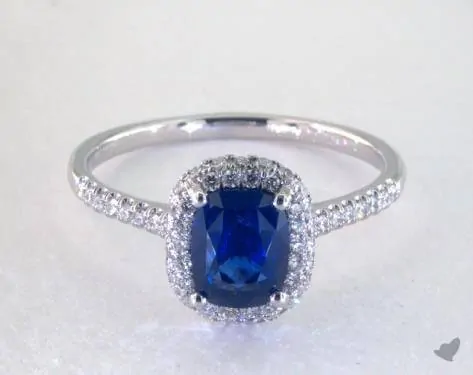
It is noteworthy that the world’s most famous engagement ring is the iconic blue sapphire ring of Princess Diana, worn now by Kate Middleton. Known for their blue color, this royal stone has been coveted and celebrated since ancient times.
While blue sapphires are the most popular and in demand, what many people don’t know is that sapphires come in all colors of the rainbow, as well as in black and white varieties!
One exceptional quality of sapphire is its durability. The stone ranks 9 on the Mohs scale of hardness, making it one of the hardest gemstones after diamonds. This makes it perfect for daily wear and ideal in withstanding damage from exposure.
Pair blue sapphire with diamonds and white gold for a classy, iconic, princess-y look or with rose or yellow gold for a stunning contrast.
2. Ruby
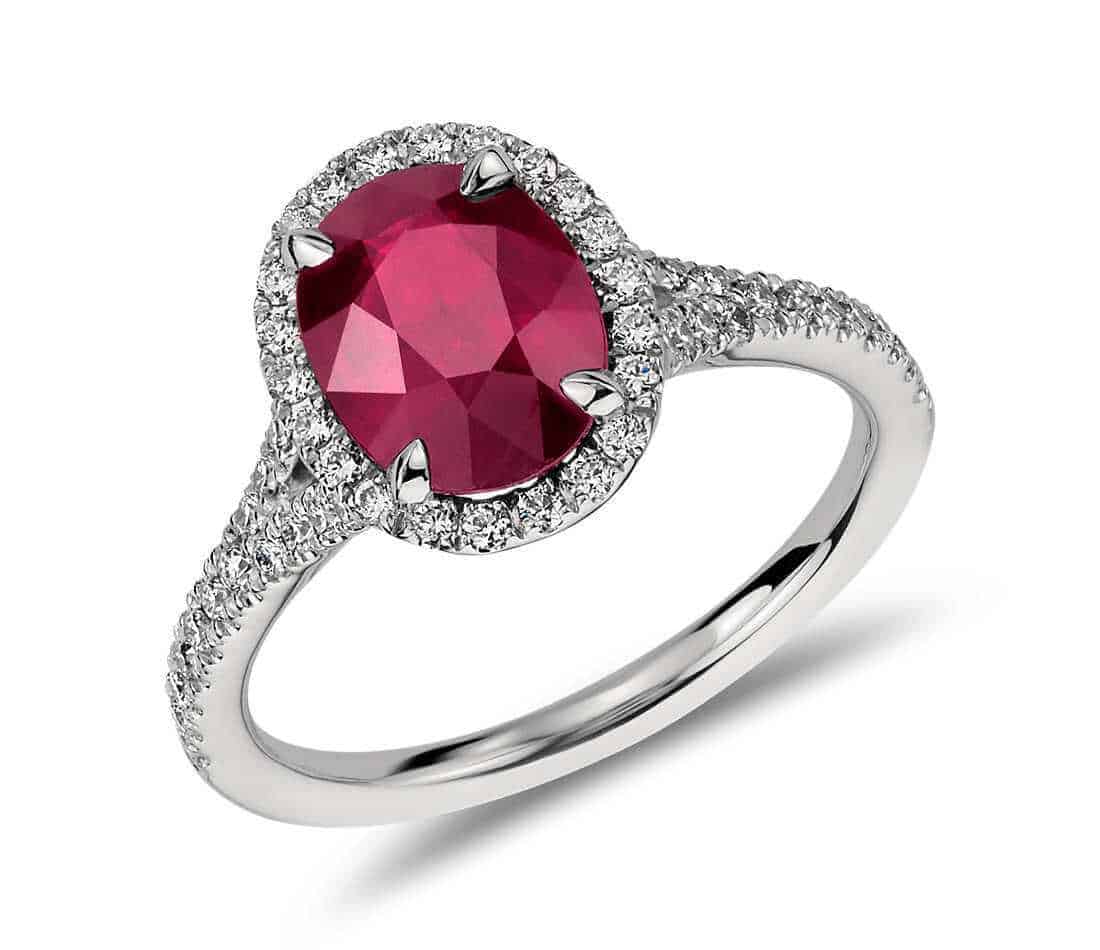
Rubies are the most precious and most expensive of colored gemstones, and have always been highly valued and sought after for their ‘pigeon blood’ red color. Natural unheated rubies are extremely rare (much rarer than diamonds) which is why these can command exorbitant prices!
Rubies are essentially red sapphires. They too are made of corundum and rank at 9 on the Mohs scale. Because rubies contain no cleavage, they don’t have the tendency to break or chip, making rubies excellent for active hands!
Most rubies on the market come with heat treatment, which is an industry standard to enhance the color of the ruby. Always check for the origin of the stone before you buy to ensure that you are paying what the stone is worth, and not more!
As a representation of love, passion and success, a ruby is a perfect centerstone for an engagement ring and an excellent symbol to begin the next chapter in a relationship!
3. Emerald
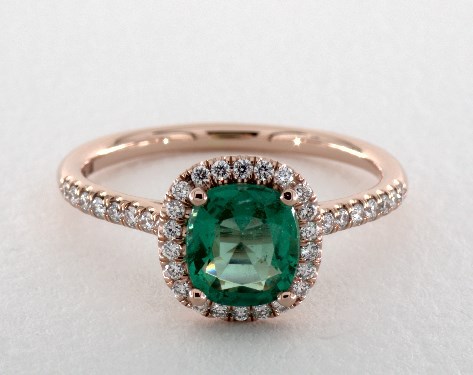
A stunning variety of the beryl family, emeralds are known for their vibrant green color and classic timelessness. You might think emeralds are dated, but think again! With the right setting and/or combination of gemstones, an emerald engagement ring will truly last the test of fashion!
When purchasing an emerald, color is a critical factor to consider as it is the color that classifies this stone. Don’t worry if your emerald contains some inclusions. These are very common and eye-clean emeralds are incredibly rare.
At 7.5 to 8 on the Mohs scale, emeralds are fairly durable stones. However, inclusions can cause the stone to weaken and be prone to chipping, so you will need to take extra care of an emerald engagement ring.
Famous emeralds include Jackie Kennedy’s and Halle Berry’s expensive and unique engagement rings.
4. Amethyst
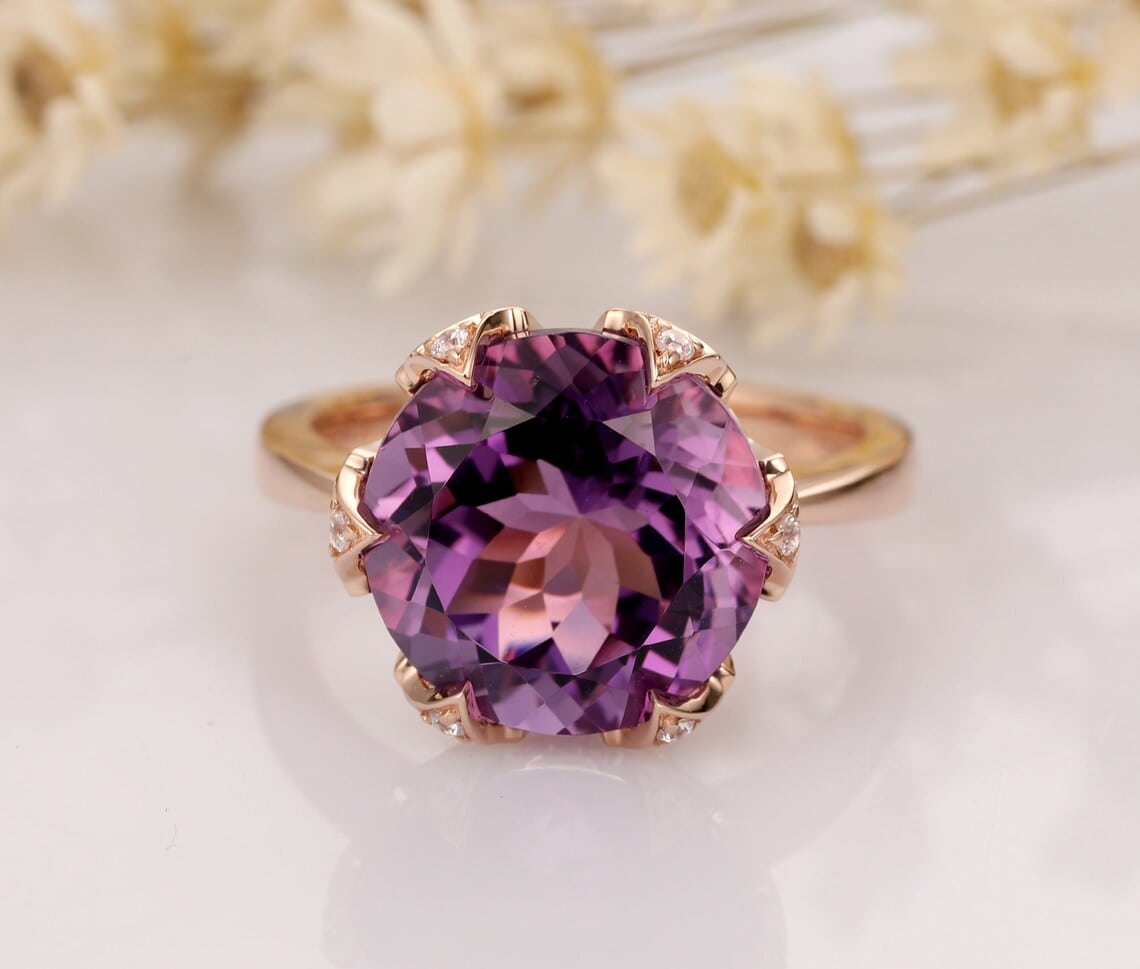
One of the most popular gemstones out there, and easily the most well-known purple rock, amethysts were once only available to royalty! In fact, it was one of the 5 cardinal gemstones, ranked alongside diamonds, sapphires, emeralds and rubies.
However, when large deposits of amethyst was found, the value plummeted, making this incredible stone accessible to all.
Amethysts come in every shade of purple, but if you want the best, choose one that displays a deep purple hue. In terms of hardness, amethysts rank 7 on the Mohs scale, which makes them sufficiently durable for daily wear (but nowhere near as tough as diamonds). Incidentally, 7 is the most important number on the Mohs scale, because any stone below 7 can be scratched and damaged by dust.
Pair your amethyst with a white gold setting to bring out its brilliance. For a unique and creative look, choose colored metals such as yellow and rose gold, as this contradiction in colors makes the amethyst stand out!
As the center-stone of an engagement ring, the amethyst is a beautiful symbol for a balanced, harmonious and peaceful relationship.
5. Tourmaline
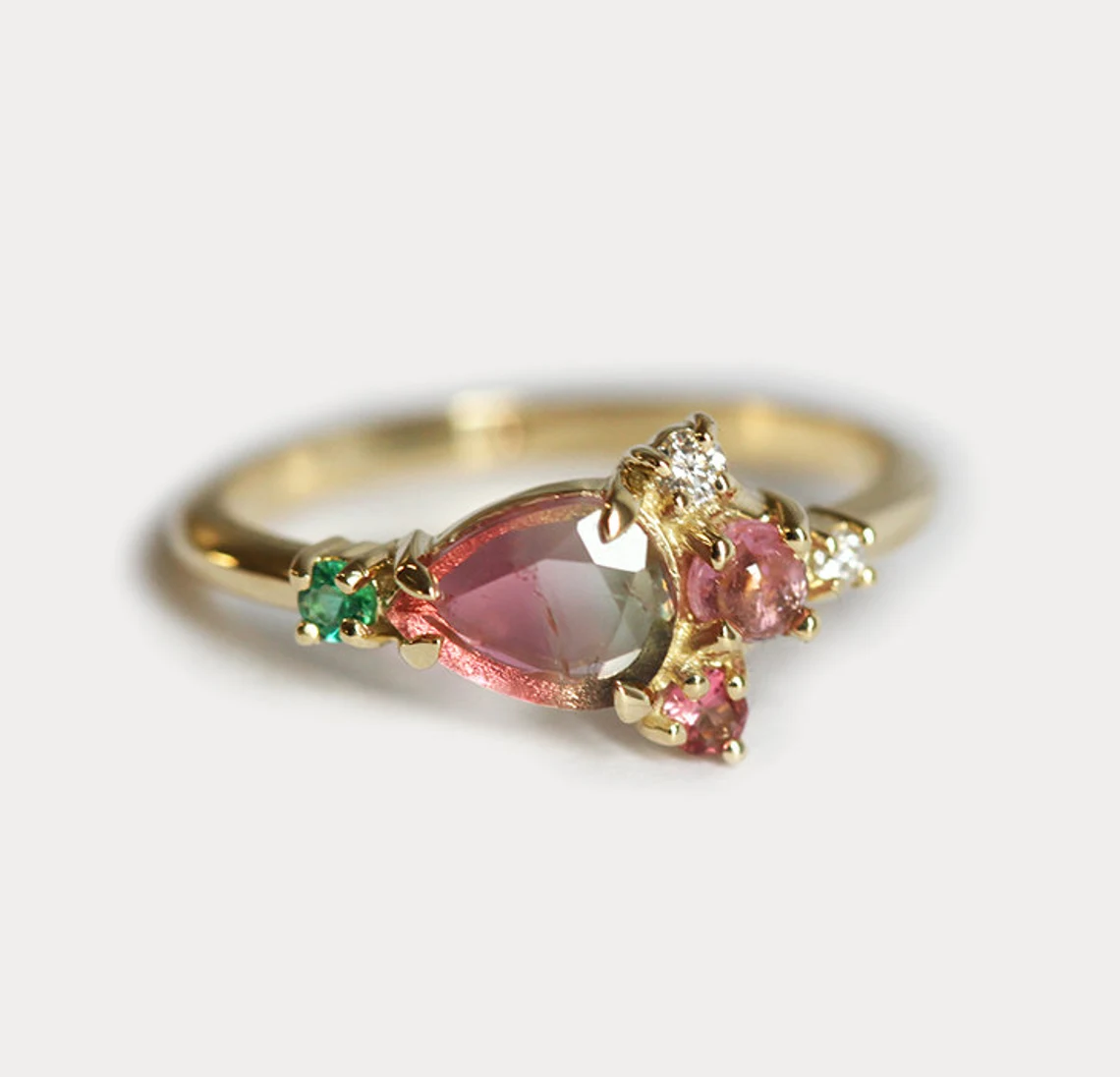
Tourmaline isn’t called the Rainbow Gemstone for nothing! It comes in every color under the sun and is a versatile and exquisite gemstone for an engagement ring.
There are many types of tourmaline to choose from, but the most popular varieties are pink, red, green, watermelon (a dual colored tourhttp://paraibamaline variety) and paraiba.
Tourmaline has a hardness rating of 7 to 7.5 on the Mohs scale and with regular maintenance, can last a very long time. It is common for tourmaline to have many inclusions so make sure you check your stone to see if it is eye-clean. It is interesting to note that for red and pink tourmaline varieties, the presence of inclusions does not really bring down the value.
Choose the tourmaline color that goes well with your style and preference. You can get creative with the setting because tourmaline looks gorgeous in any kind of setting and metal color. It looks particularly beautiful in vintage settings and can carry off a bohemian look well.
6. Citrine
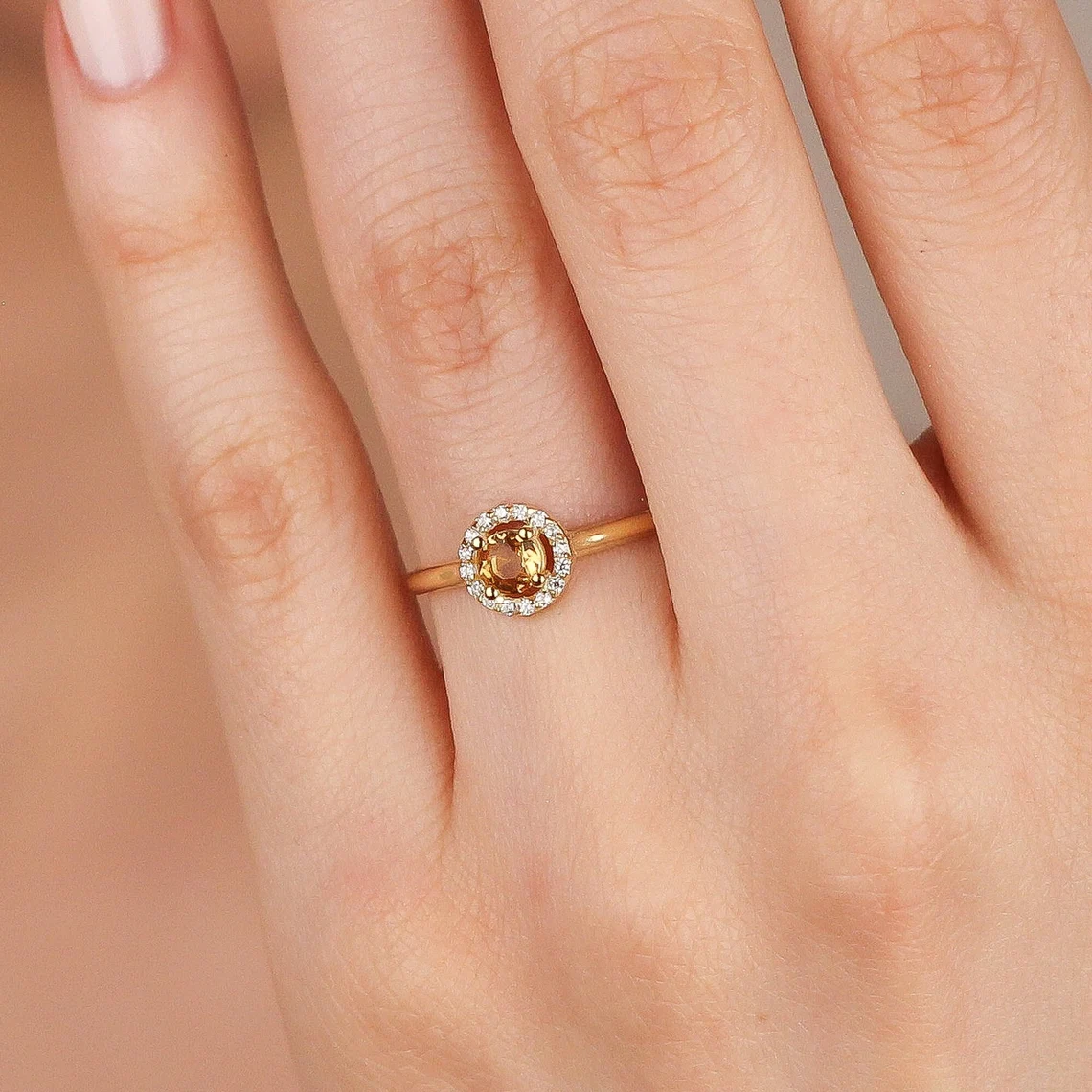
Called citrine after the French word citron meaning lemon, this is a rock that is known for its gorgeous yellow-gold tones.
When buying a citrine, ensure that the stone has been well faceted to enhance its brilliance. Most citrines on the market are eye-clean and don’t contain any visible impurities.
Because citrine has a hardness ranking of 7 on the Mohs scale, it is a fairly tough stone and can be worn daily. However, if the stone does get damaged, replacing it will not be costly as citrine is very affordable.
Due to its color, citrine symbolizes positivity, happiness and contentment, qualities of a perfect relationship!
7. Garnet
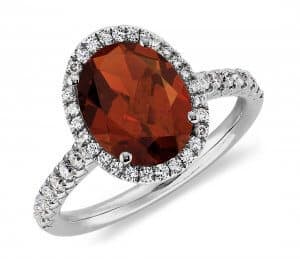
Although garnets come in every color imaginable, the most popular variety is the dark red garnet. Garnets are generally eye-clean stones, with high levels of clarity and transparency. They are also an affordable gemstone and come in all shapes and sizes for jewelry.
Garnets rank 6.5 to 7 on the Mohs scale. This means that it isn’t very hard and shouldn’t be exposed to rough knocks and careless wear. With proper maintenance and care, many have had garnet engagement rings that have lasted a lifetime.
Because garnets look very similar to rubies, people generally confuse the two. A garnet is nowhere near as expensive as a ruby, meaning you can have the look without the price tag!
8. Aquamarine
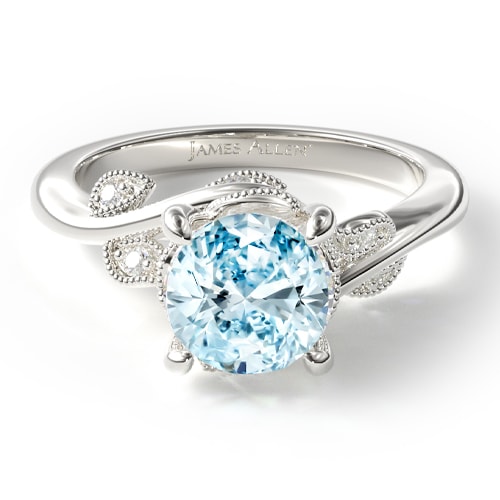
This stunning light blue gemstone is reminiscent of skies and seas! It is named after seawater because of its pretty pale blue hue.
It is a member of the beryl family of gemstones, and is the second most popular of this family after emeralds. Unlike emeralds, aquamarine is a much tougher stone and does not tend to chip or break as easily, as it generally has fewer inclusions and fractures. It is hard stone with a 7.5 to 8 rating.
The most valuable variety of aquamarine is the deep rich blue stones. When well-faceted, aquamarine is fairly brilliant and reflects light well.
Aquamarine has a modern and trendy vibe when worn as an engagement ring. It is stunning set in white gold, especially when paired with little diamonds. For a quirky, statement look, pair with other colored metals such as yellow or rose gold.
9. Morganite
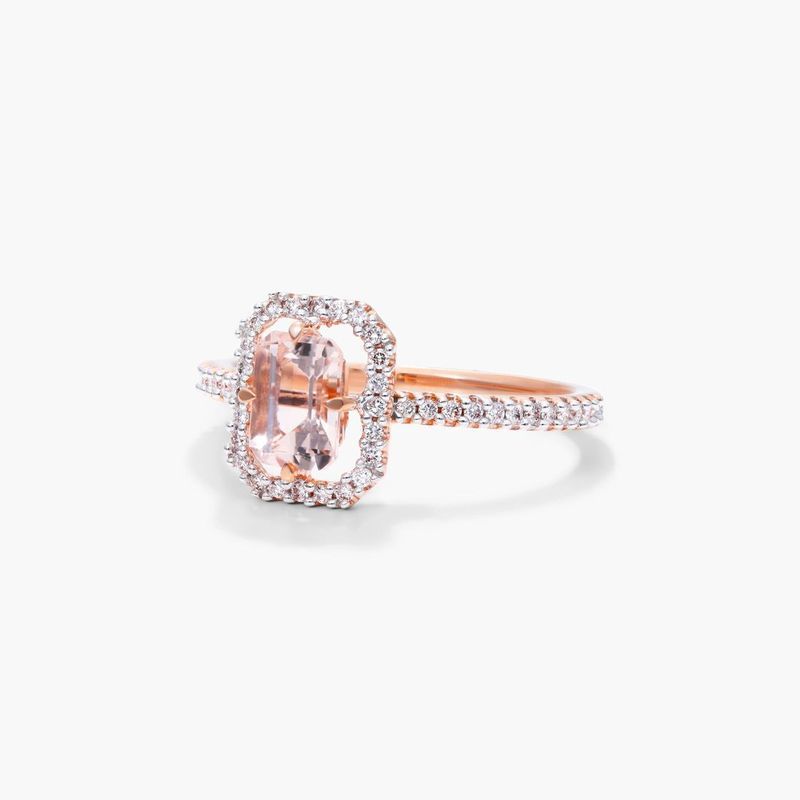
Morganite, like emerald and aquamarine, is also of the beryl family. It too has a hardness rating of 7.5 to 8 and can be worn daily as long as this is done with care. You can find morganite in every shade of pink, but the most popular seem to be pink and rose hues. In terms of clarity, morganite is generally eye-clean and transparent.
Don’t worry if your morganite is heat treated. This is a common industry standard, with almost all morganites on the market undergoing this treatment to enhance the color and prevent it from fading.
It goes without saying that morganite looks best when mounted in rose gold settings, which complements and enhances its pretty pink color.
10. Topaz
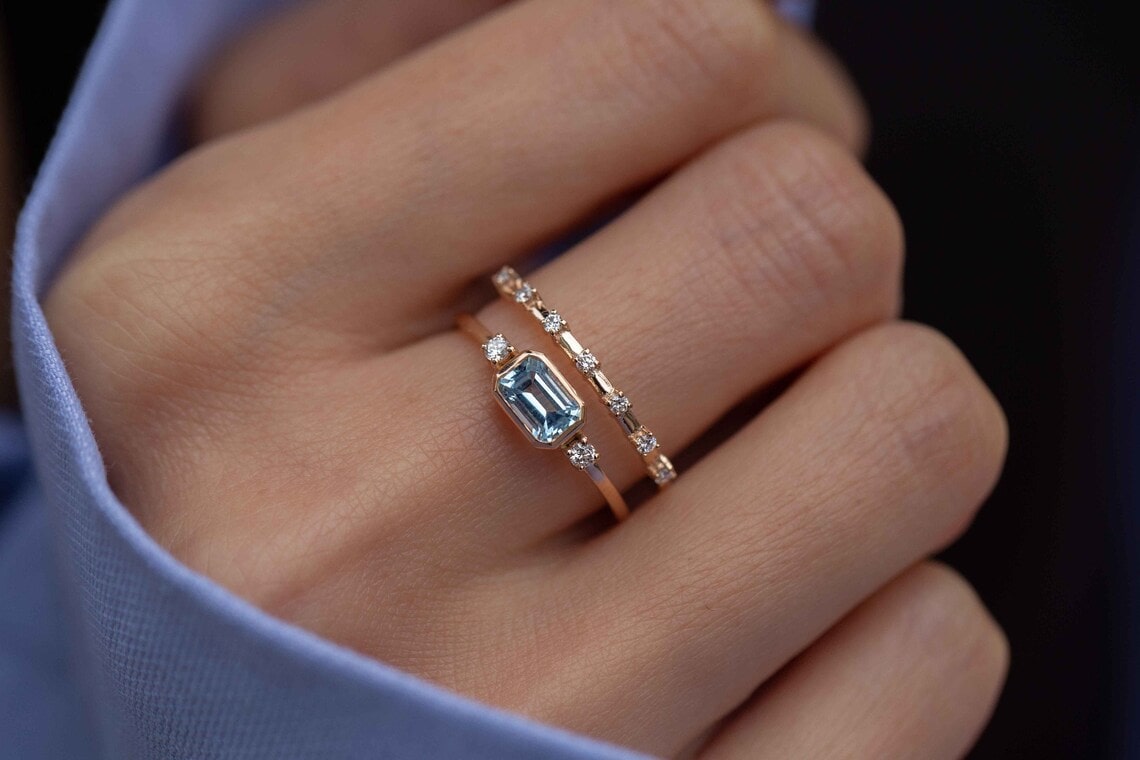
When it comes to choosing your topaz, you’ll be spoilt for choice! This gemstone is found in a range of gorgeous colors!
Most natural topaz is usually colorless. This is often heat treated to produce the beautiful topaz hues on the market, especially brilliant blue. These are generally very affordable stones. While red is the most valuable and coveted type of topaz, blue is the most commonly found. Of these, the darker London Blue, Sierra Blue and Swiss Blue are more pricey varieties.
Topaz is a radiant stone with high levels of clarity and transparency. It is quite a hard gemstone too, ranking 8 on the Mohs scale and has very good durability.
Depending on the color you choose, you can pick any type of setting or metal. Blue topaz looks very dainty and pretty when mounted in rose or yellow gold settings and paired with diamonds but for a modern look, pair with white gold.
11. Tanzanite
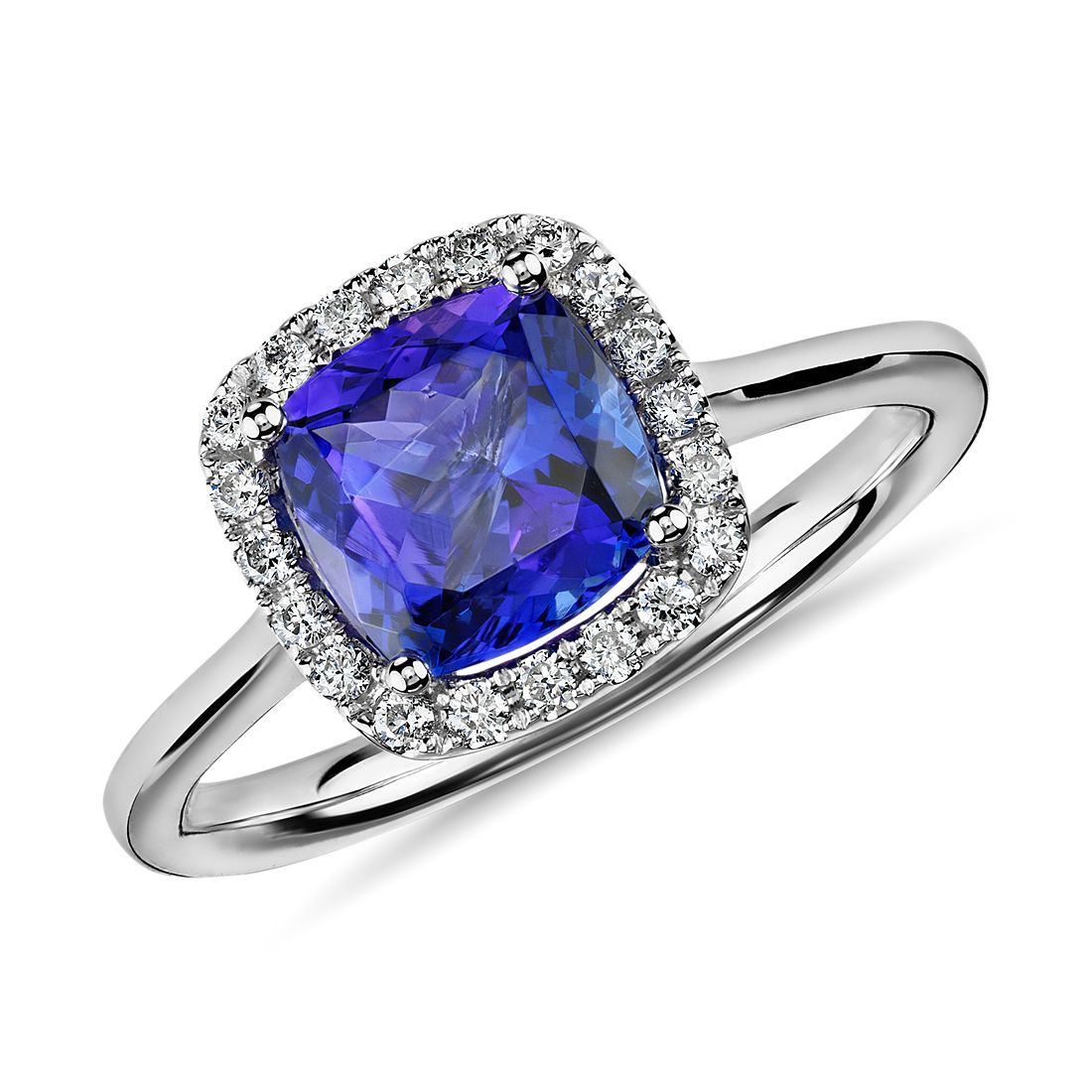
Much rarer than diamonds and with a deep blue hue that can rival the more expensive blue sapphire, tanzanite is a wonder of nature! It was discovered relatively recently, in the sixties, and named after the country it was found in – Tanzania.
Tanzanite ranks at 6.5 to 7 on the Mohs scale. It is gorgeous set in white gold and looks stunning with set with little diamonds. It is often confused for sapphire as it looks very similar.
Now is a good time to get your hands on a tanzanite because the primary sources of this special gemstone are rapidly depleting. This is why it is called the one-generation stone because in a few decades, it is estimated that there will be no more tanzanite in nature. All the more reason to give your loved one a tanzanite engagement ring!
12. Peridot
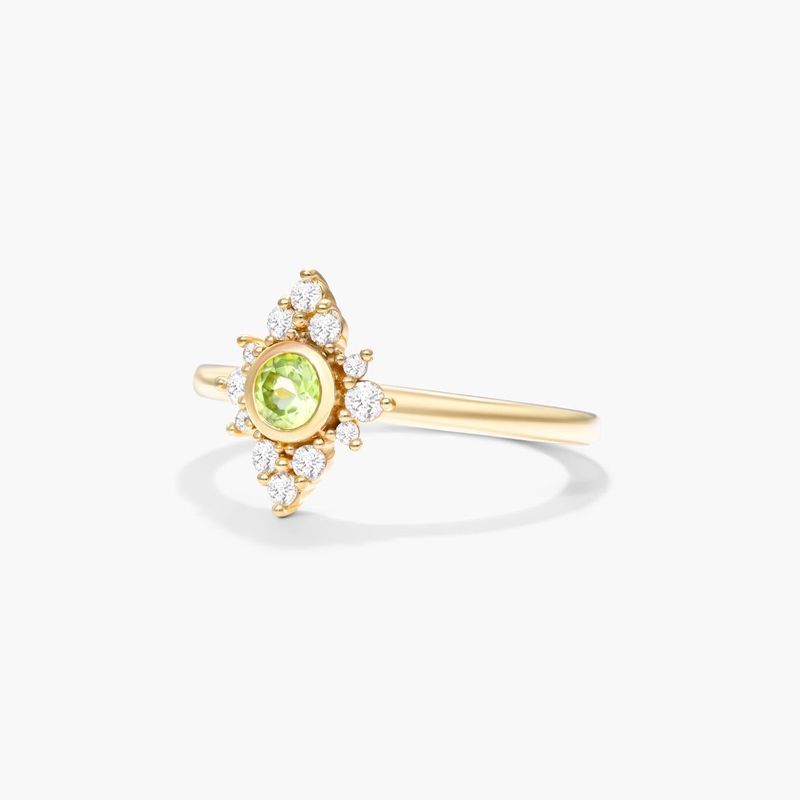
Found only in one color, peridot is an idiochromatic stone that is growing in popularity for engagement rings. The bright lime-green hue is what sets this stone apart. Whether or not green is your color, you have to admit peridot is pretty intriguing!
Peridot is one of two stones (the other being diamonds) that are formed deep within the mantle of the earth and come to the surface through violent geological activity. No wonder it is called the volcanic gemstone!
With a Mohs ranking of 6.5 to 7, peridot is suitable for daily wear but take care to maintain its polish and luster. It is especially beautiful when paired with yellow or rose gold, giving it a classic, sophisticated look.
Peridot brings life to jewelry and ads an eye-catching pop of color. It is also the birthstone for August, so if your loved one is an August baby, that’s an added reason to propose with a peridot!
13. Turquoise
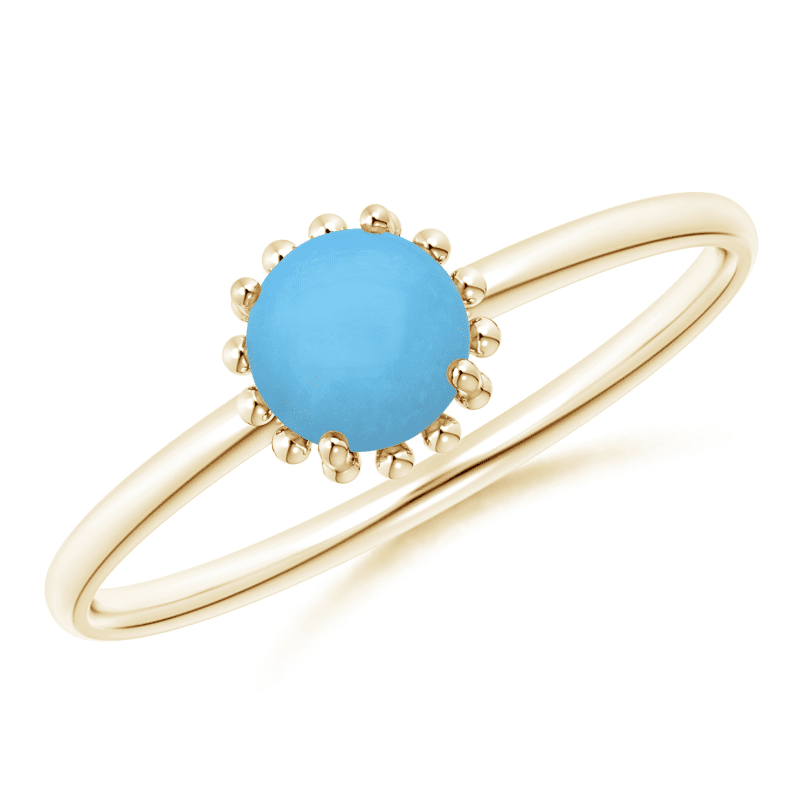
This mystical stone with its intriguing hue is the only gemstone with a color named after it! It is one of the oldest used minerals and has been highly valued in many cultures since ancient times.
Turquoise is formed when water oozes through rocks with minerals such as copper and aluminium, setting off a chemical reaction. This process takes millions of years! The result is beautiful turquoise.
Turquoise is an opaque stone and is quite soft, ranking at 5 to 6 on the Mohs scale. Because it is porous, turquoise can be easily damaged if exposed to chemicals and hard knocks. It requires extra care to ensure that it lasts long.
It is often heavily included and contains the dark veins (called matrix). Stones free of these visible flaws are more valuable and sought after.
Symbolising trust, faithfulness, luck and wealth, turquoise comes with a wealth of meaning perfect for a relationship. Although it may require more effort to keep it lasting a long time, it is such a beautiful gemstone that we think this extra effort is well worth it!
14. Sunstone
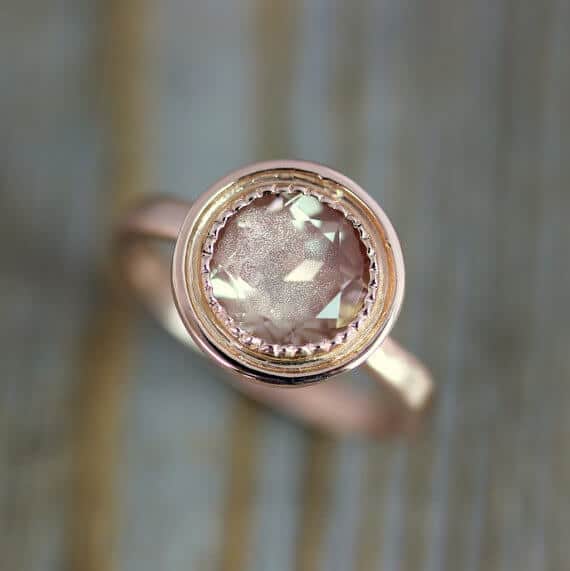
Not many people have heard of this stone and that is because it is quite rare and uncommon. Sunstone, when touched by light, gives of metallic flashes, that originate from the tiny mineral impurities that are embedded within the stone.
Sunstones can be found from yellow to red shades and some can have a color gradient. When you look at a sunstone that contains these impurities at the right angle, it emits rays of light… like the sun.
The most famous sunstone deposits can be found in Oregon, which is where Oregan Sunstone comes from.
Because the sunstone is only a 6 on the Mohs scale, it is not the hardest stone out there. Choosing a protective setting such as bezel will keep it safe from daily exposure and maintain its sparkle and polish. For the most breathtaking look, pair your sunstone with rose gold.
Show your significant other that they mean as much as the sun to you!
15. Tsavorite
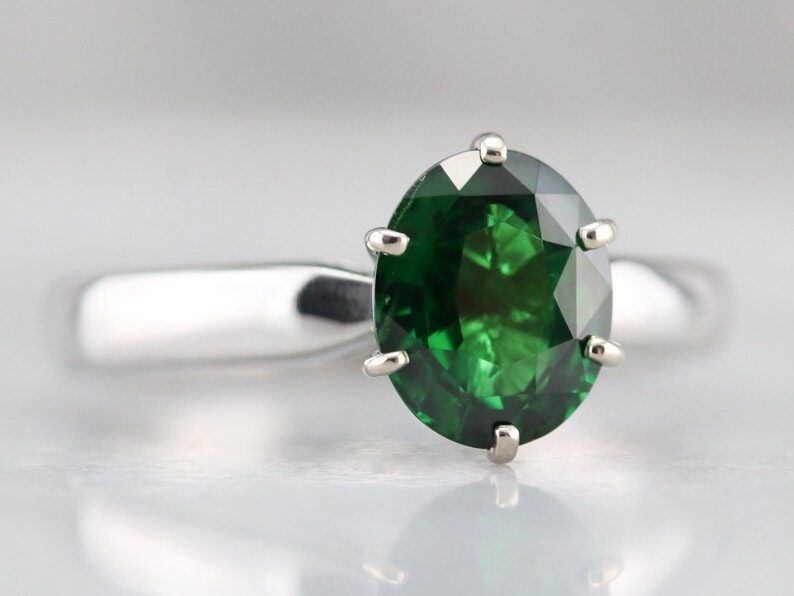
Tsavorite (a.k.a. tsavolite) is a cousin of the garnet, and gets its bright green color from certain impurities present during its formation. It is one of the most popular of the garnet varieties and more expensive because it is very rare.
Although emeralds are the most popular green stone, a tsavorite is a great option if green is your color. It is not as pricey as emeralds, comes with much better clarity and transparency. Tsavorites are also much more durable than emeralds, because they aren’t as included. So even though they are only 7 on the Mohs scale, they are tougher and can last longer.
16. Moonstone
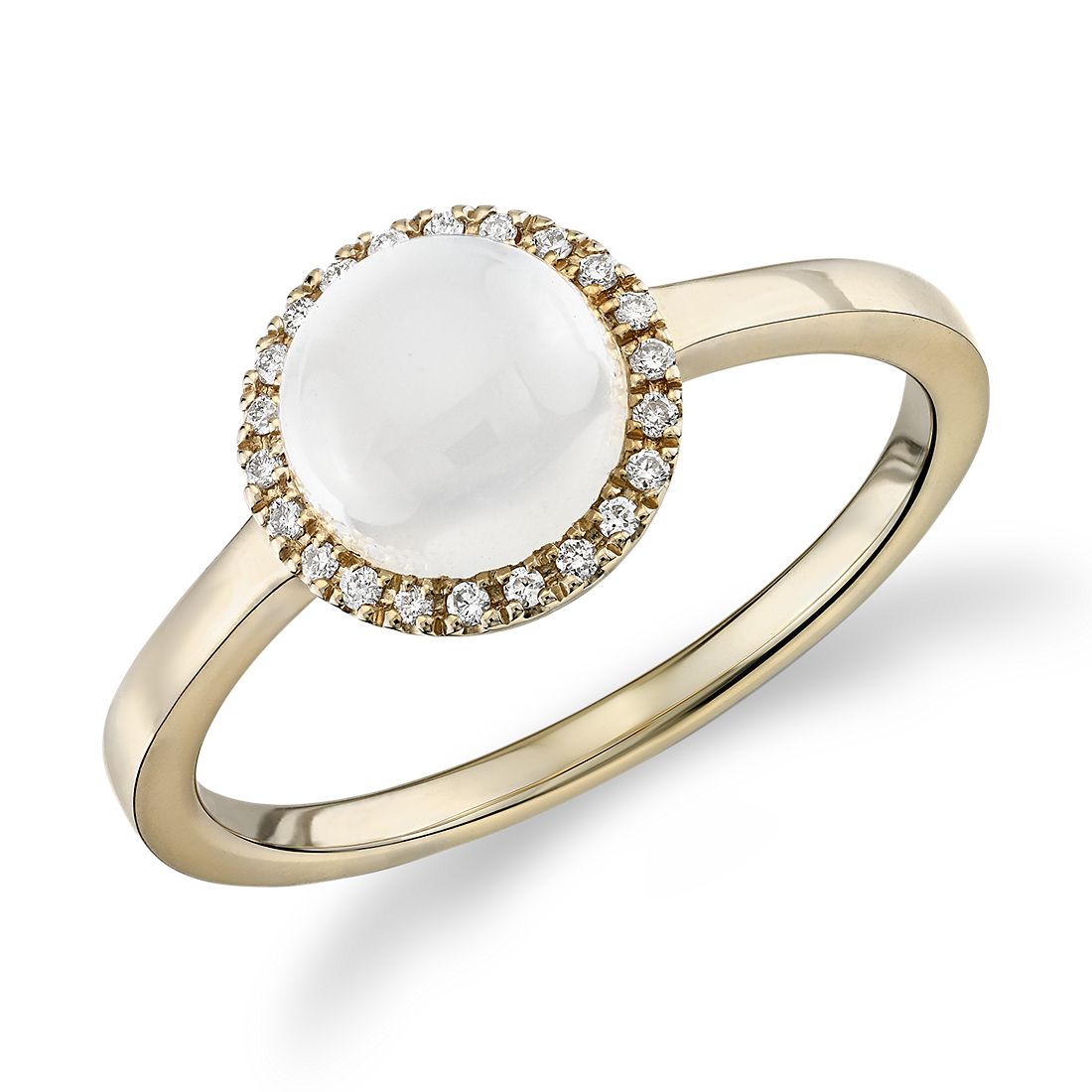
Here is another gemstone named after a celestial body! The moonstone is hauntingly beautiful and the very name evokes a sense of mystery and beauty.
Although the moonstone is a relatively soft stone, ranking at 6 to 6.5 on the Mohs scale, it is an engagement ring favorite because of its stunning good looks! However, it requires diligent care. Don’t expose it to rough wear and ensure it is regularly maintained so it doesn’t lose its luster.
Because of its neutral color, moonstone combines well with other gemstones and any metal color. When polished, smooth and shiny moonstone is breathtakingly beautiful. For an eye-catching and simply gorgeous look choose a raw unpolished moonstone.
17. Iolite
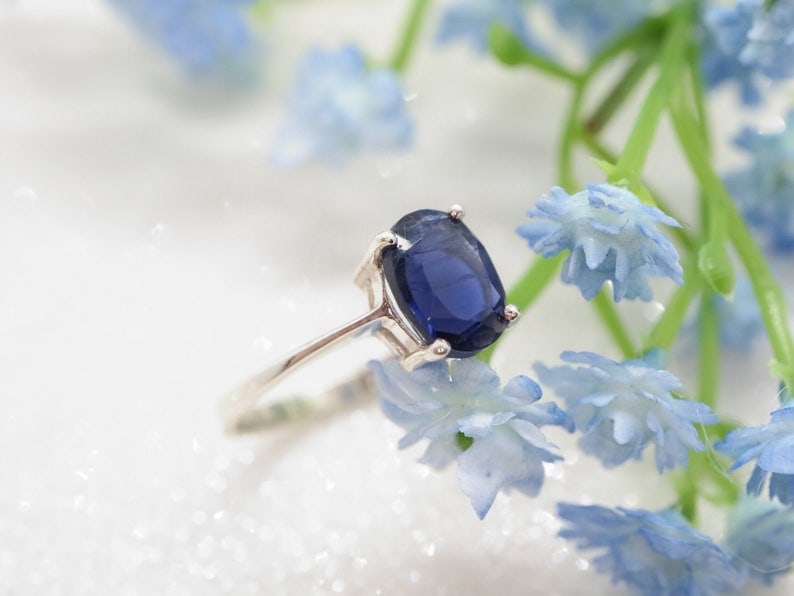
This gorgeous blue gemstone sparkles with fire when touched by light. Iolites are not very popular but are stunning gemstones that can rival the beauty of more expensive blue stones such as sapphire or tanzanite. Because it is found abundantly around the world, it is as highly valued.
Ranking at 7 to 7.5 on the Mohs scale, Iolite is hard enough to wear daily but because it has distinct cleavage, it is not a very tough stone and is susceptible to chipping and cracking if struck with force. For this reason, a protective setting is essential to prolong the life of your iolite.
When expertly cut, iolite sparkles brightly and makes for a gorgeous center stone. As an engagement ring choice, it is unique and creative.
18. Alexandrite
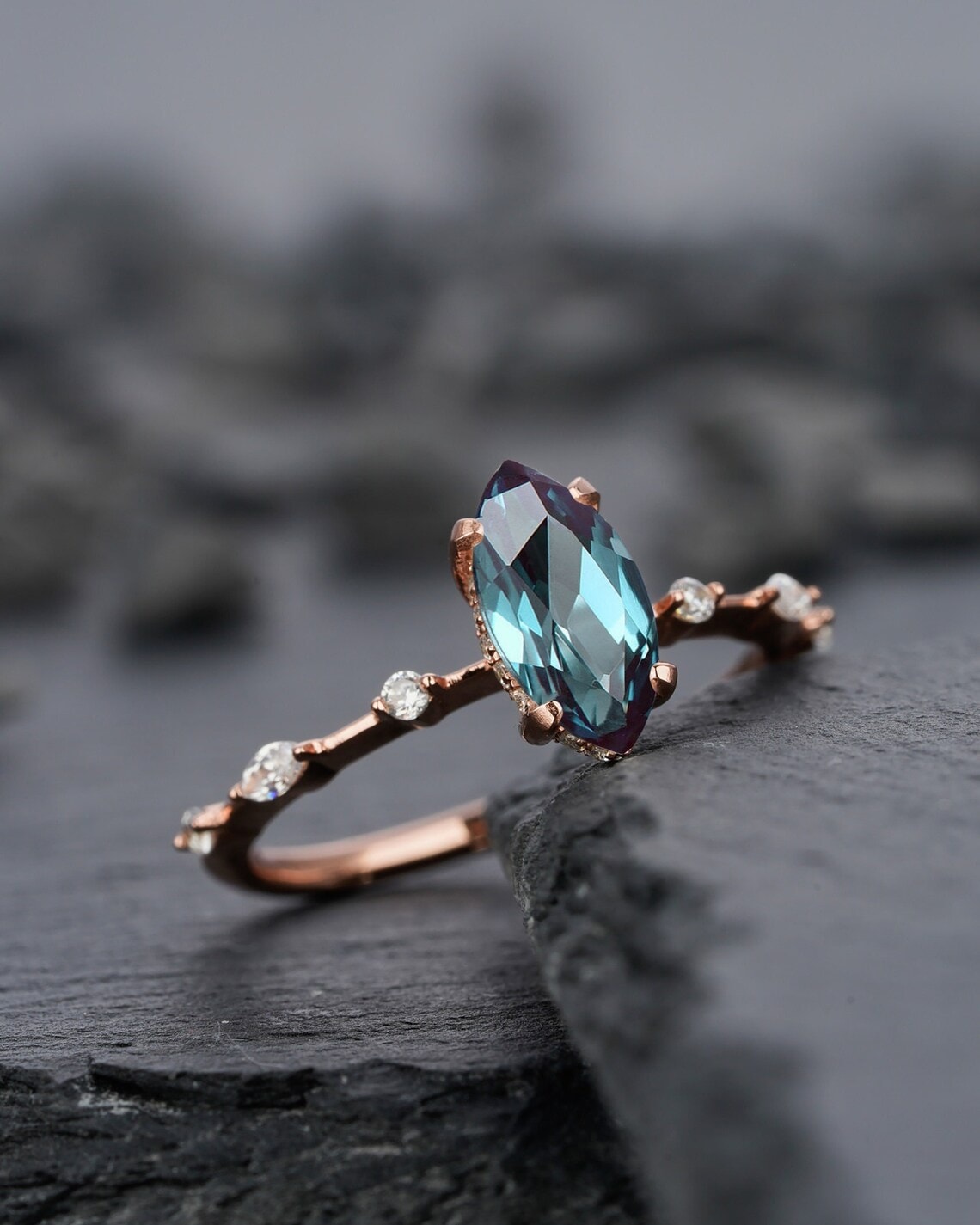
The magic of alexandrite is that it is a color-changing gemstone. Known for being an ‘emerald by day and a ruby by night’, it is valued for its ability to change color from green to red based on the light source it is viewed under. It’s as good as a two-in-one gemstone!
Because alexandrite is a very rare and pricey stone, a majority of the stones sold on the market are synthetic and you will come across many imitations as well. Always check for the origin of your stone and ensure that you receive a certificate of authenticity if you desire a natural alexandrite.
Alexandrite is a hard stone at 8.5 on the Mohs scale. It has excellent durability and toughness and is perfectly suited for daily wear, especially for busy hands! The stone pairs well with any metal color, but looks especially compelling when set in rose gold.
You don’t have to buy a very big alexandrite if budget is a concern. A little goes a long way if expertly mounted in a beautiful setting!
Wrapping Up
Whatever your reasons may be in going down the non-traditional route for an engagement ring, it is a great idea to explore your different options. Why limit yourself to just one stone when there are hundreds to choose from, each as beautiful as the other?
By doing this, you give more meaning to your ring than just doing something because that’s how it has always been done. You’ll be able to choose a unique piece that resonates with you and your loved one, a piece to cherish for all times.


